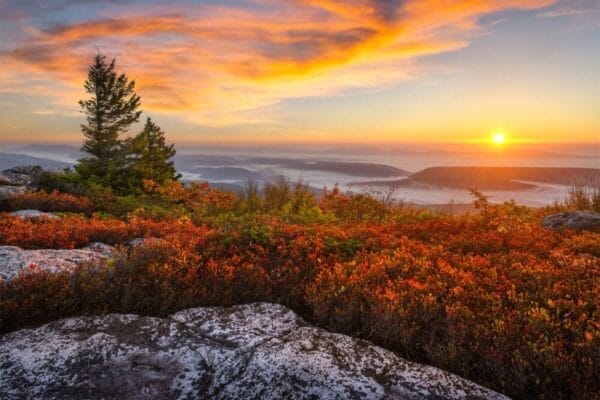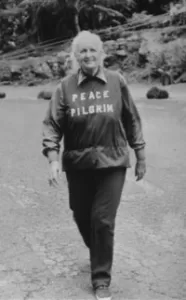Capturing the Beauty of West Virginia’s Landscapes: Photography Tips for Outdoor Enthusiasts
West Virginia’s stunning landscapes offer endless opportunities for outdoor enthusiasts and photography buffs alike. From the rugged Appalachian Mountains to the lush forests and scenic rivers, the Mountain State is a photographer’s paradise. Whether you’re a seasoned pro or just starting out, these tips will help you capture the beauty of West Virginia’s natural wonders.
Essential Tips for Landscape Photography in West Virginia
1. Chase the Golden Hours
Plan your shoots around the golden hours – the first and last hour of sunlight during the day. The soft, warm light during these times can create stunning visual effects and atmospheres in your landscape photos. The golden hour light can emphasize textures, create long shadows, and bathe your scenes in a magical glow. Be sure to arrive at your location early to set up and compose your shots before the light reaches its peak.
2. Invest in a Sturdy Tripod
Use a tripod to ensure sharp images, especially in low-light situations or when using slower shutter speeds. A sturdy tripod helps prevent camera shake and blurriness, allowing you to capture crisp details even in challenging lighting conditions. When setting up your tripod, make sure it’s stable and level, and consider using a remote shutter release or your camera’s self-timer to minimize vibrations.
3. Explore Different Compositions
Experiment with different compositions, such as the rule of thirds, leading lines, or framing, to create more engaging and balanced images. The rule of thirds involves dividing your frame into a 3×3 grid and placing key elements along the lines or intersections. Leading lines, such as roads, rivers, or fence lines, can guide the viewer’s eye through the image, while framing uses natural elements like branches or rock formations to create a “frame” around your subject.
4. Don’t Neglect the Foreground
Incorporate foreground elements, such as rocks, plants, or water, to add depth and interest to your landscape shots. A strong foreground can provide a sense of scale, lead the viewer’s eye into the scene, and create a more immersive experience. When composing your shot, look for interesting foreground elements that complement your main subject and help tell a story.
5. Utilize Filters to Enhance Your Images
Use filters, such as polarizers or neutral density filters, to control reflections, reduce glare, and balance exposure in high-contrast scenes. A polarizing filter can help cut through haze, deepen blue skies, and reduce unwanted reflections on water or foliage. Neutral density filters, on the other hand, allow you to use slower shutter speeds in bright conditions, enabling you to create smooth, silky effects on moving water or clouds.
Embrace the Changing Seasons and Weather
6. Capture the Moods of the Seasons
Pay attention to the weather and seasonal changes, as different conditions can greatly affect the mood and appearance of the landscape. Each season brings its own unique charm to West Virginia’s landscapes. Spring wildflowers, lush summer greens, vibrant fall colors, and snowy winter scenes all offer distinct photographic opportunities. Plan your shoots around these seasonal changes to capture the diverse beauty of the Mountain State.
7. Don’t Be Afraid of Less-Than-Ideal Weather
Don’t be afraid to venture out in less-than-ideal weather conditions, such as fog, mist, or light rain, as these can create unique and atmospheric images. Overcast skies can provide soft, even lighting that’s perfect for waterfall or forest shots, while fog and mist can add a sense of mystery and depth to your landscapes. Just be sure to protect your gear from the elements and prioritize your safety in challenging conditions.
Respect the Environment and Stay Safe
As outdoor enthusiasts and photographers, it’s our responsibility to protect and preserve the natural spaces we cherish. When capturing the beauty of West Virginia’s landscapes, always remember to follow the Leave No Trace principles, which we’ve discussed in depth in our blog post, “Leave No Trace: Preserving Nature Through Sustainable Practices.” These guidelines help minimize our impact on the environment, ensuring that future generations can enjoy the same breathtaking vistas and unspoiled wilderness.
Some key principles to keep in mind include staying on designated trails, properly disposing of waste, leaving natural objects as you find them, and being considerate of wildlife and other visitors. By adhering to these principles and prioritizing safety, we can responsibly explore and photograph the stunning landscapes of West Virginia while maintaining the integrity of these precious natural spaces.
West Virginia’s natural beauty is a treasure trove for photographers, offering countless opportunities to capture breathtaking images. By following these tips and respecting the environment, you’ll be well on your way to creating stunning photographs that showcase the best of the Mountain State. So grab your camera, head outdoors, and let the wild landscapes of West Virginia be your muse. Happy shooting!


















 where she boldly declared that women were just as capable as men. To prove her point, she bet fellow partygoer John Barry $20,000 that she could cycle around the world faster than he could travel by horse and wagon. Her motivation? Securing publicity and sponsorship for Londonderry Lithia Springs Water. She soon became a notorious celebrity in newspapers, which closely followed her adventures.
where she boldly declared that women were just as capable as men. To prove her point, she bet fellow partygoer John Barry $20,000 that she could cycle around the world faster than he could travel by horse and wagon. Her motivation? Securing publicity and sponsorship for Londonderry Lithia Springs Water. She soon became a notorious celebrity in newspapers, which closely followed her adventures.
 with them regularly. Give trusted contacts your flight details, accommodation bookings, daily itinerary, tour/activity plans, and emergency contacts. Set up regular check-in times. Share your location via apps if needed.
with them regularly. Give trusted contacts your flight details, accommodation bookings, daily itinerary, tour/activity plans, and emergency contacts. Set up regular check-in times. Share your location via apps if needed.
 Cooking Morels
Cooking Morels